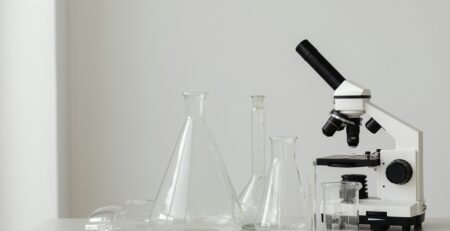4
Sep
Amber Glassware in the Lab: UV Protection and Chemical Stability Explained
Certain chemicals are highly sensitive to light and degrade rapidly when exposed. For laboratories in Australia, amber borosilicate glassware (BORO 3.3) provides a simple yet essential solution. By filtering out harmful UV and visible light, amber glassware protects light-sensitive reagents, solvents, and pharmaceuticals while ensuring safety, accuracy, and compliance with international standards.
Why Amber Glassware Matters
Amber-coloured borosilicate glass is engineered to block UV rays and wavelengths of visible light that trigger photodegradation.
- Preserves the integrity of photosensitive compounds.
- Extends the shelf life of organic solvents and pharmaceuticals.
- Complies with ISO and ASTM specifications for chemical storage containers.
- Available in bottles, flasks, and specialised labware.
This protection is critical in analytical chemistry, environmental testing, and pharmaceutical quality control.
Benefits of Borosilicate Amber Glassware
BORO 3.3 glass provides all the advantages of standard clear laboratory glassware, with the added benefit of UV protection:
- Thermal resistance for heating, cooling, and autoclaving.
- Chemical durability against acids, alkalis, and solvents.
- Mechanical strength for long service life.
- Reusability, reducing plastic waste in labs.
Combined, these properties make amber glassware both sustainable and essential for sensitive laboratory workflows.
Applications Across Australian Laboratories
- Pharmaceutical labs: Storing light-sensitive drugs and formulations.
- Analytical chemistry: Protecting reagents from photodegradation.
- Environmental labs: Preserving water and soil samples before analysis.
- Educational labs: Teaching safe storage and chemical handling practices.
Comparison Table: Amber vs Clear Borosilicate Glassware
| Feature | Amber Glassware | Clear Glassware |
|---|---|---|
| Light Protection | Blocks UV and visible wavelengths | No light protection |
| Visibility | Limited (dark tint) | Excellent clarity |
| Best Applications | Photosensitive reagents, pharmaceuticals | General reagents, teaching, visual checks |
| Standards Compliance | ISO & ASTM compliant | ISO & ASTM compliant |
| Sustainability | Reusable BORO 3.3 glass | Reusable BORO 3.3 glass |
FAQs
Q1: Does amber glass completely block UV light?
Amber borosilicate glass blocks most UV and visible light but may not eliminate all exposure. For ultra-sensitive samples, additional shielding is recommended.
Q2: Can amber bottles be autoclaved?
Yes, BORO 3.3 amber bottles are safe for autoclaving, though repeated cycles may gradually affect the coating.
Q3: Is amber glass stronger than clear glass?
Both are equally strong, as the amber tint is a colouration of borosilicate glass, not a separate material.
Q4: Are amber bottles recyclable?
Yes, like other borosilicate glassware, amber bottles are reusable and recyclable, making them sustainable alternatives to plastic.
References
- ISO 4796: Laboratory Glassware — Bottles for Liquids.
- ASTM E438: Standard Specification for Glasses in Laboratory Use.
- ISO 3585: Borosilicate Glass 3.3 — Properties and Standards.
- University of Melbourne Chemical Safety Manual.
- NIST Chemistry WebBook, National Institute of Standards and Technology.

